| Common Name | Common Thyme, Garden thyme, Wild Thyme |
| Family | Lamiaceae or Labiatae |
| USDA hardiness | 5-11 |
| Known Hazards |  A comment has been made in one report on medicinal uses that the plant should be used with caution. No explanation was given. It quite possibly refers to overuse of the essential oil. All essential oils, since they are so concentrated, can be harmful in large doses. Avoid if inflammatory disease of the gastrointestinal tract. Internal use contraindicated especially in pregnancy. Caution if sensitive to grasses. Dilute oil in carrier oil before topical use. A comment has been made in one report on medicinal uses that the plant should be used with caution. No explanation was given. It quite possibly refers to overuse of the essential oil. All essential oils, since they are so concentrated, can be harmful in large doses. Avoid if inflammatory disease of the gastrointestinal tract. Internal use contraindicated especially in pregnancy. Caution if sensitive to grasses. Dilute oil in carrier oil before topical use. |
| Habitats | Dry slopes, rocks and maquis. Always found on clay or limestone soils. |
| Range | S. Europe. |
| Edibility Rating |      (4 of 5) (4 of 5) |
| Other Uses |      (5 of 5) (5 of 5) |
| Weed Potential | No |
| Medicinal Rating |      (3 of 5) (3 of 5) |
| Care (info) |
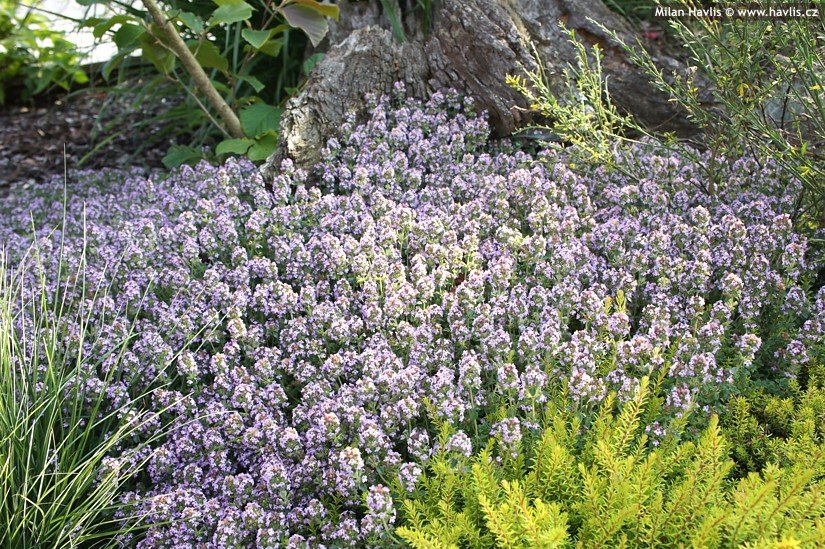



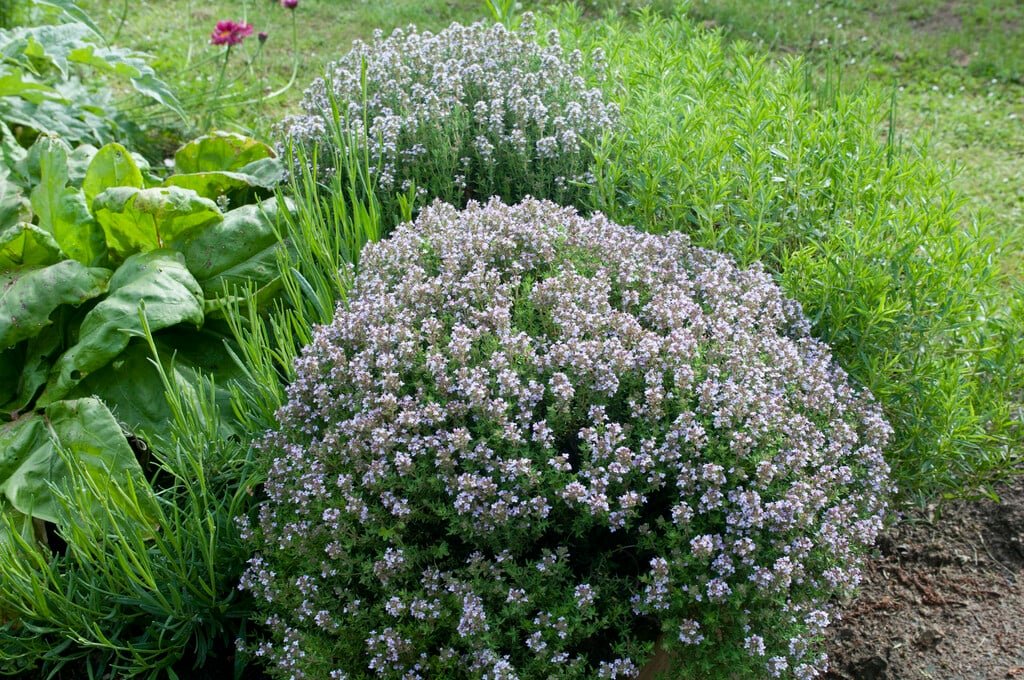
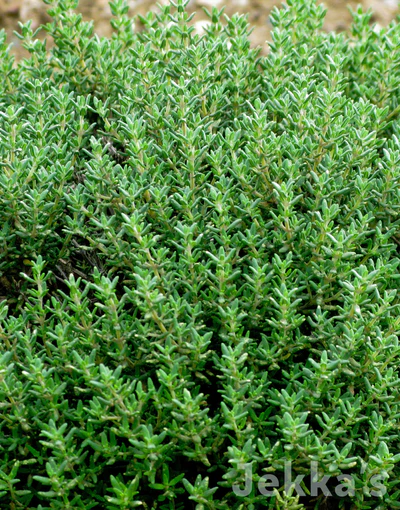
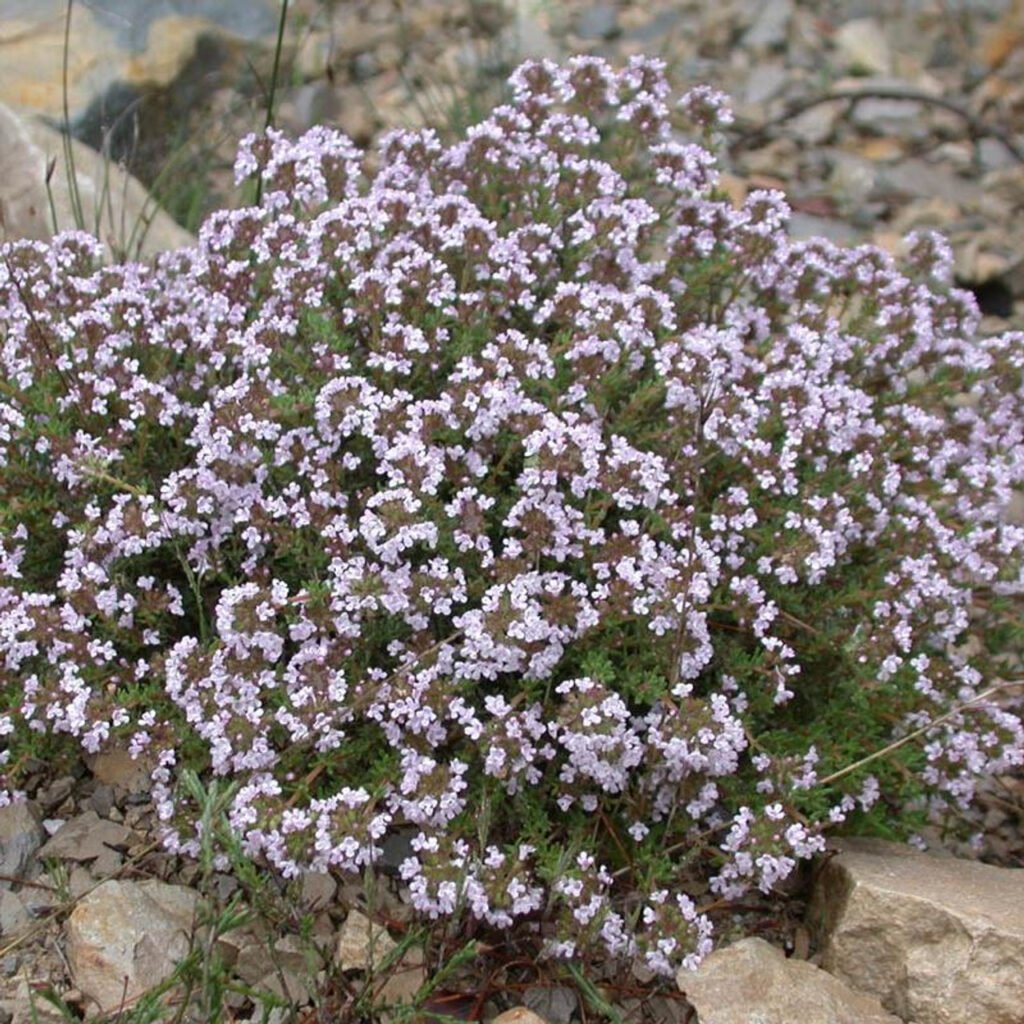
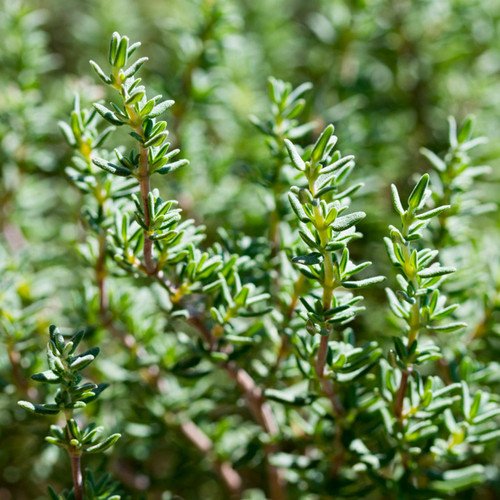
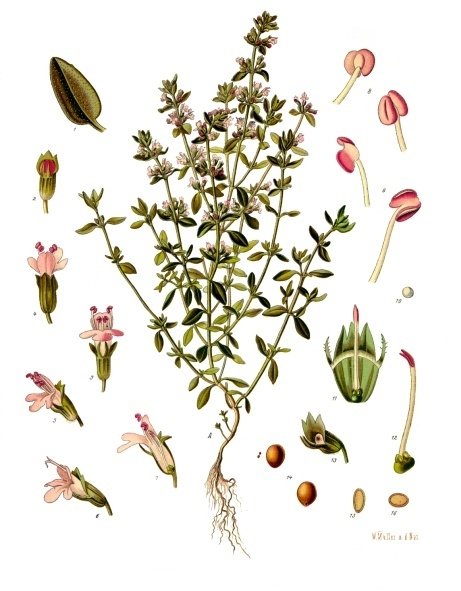
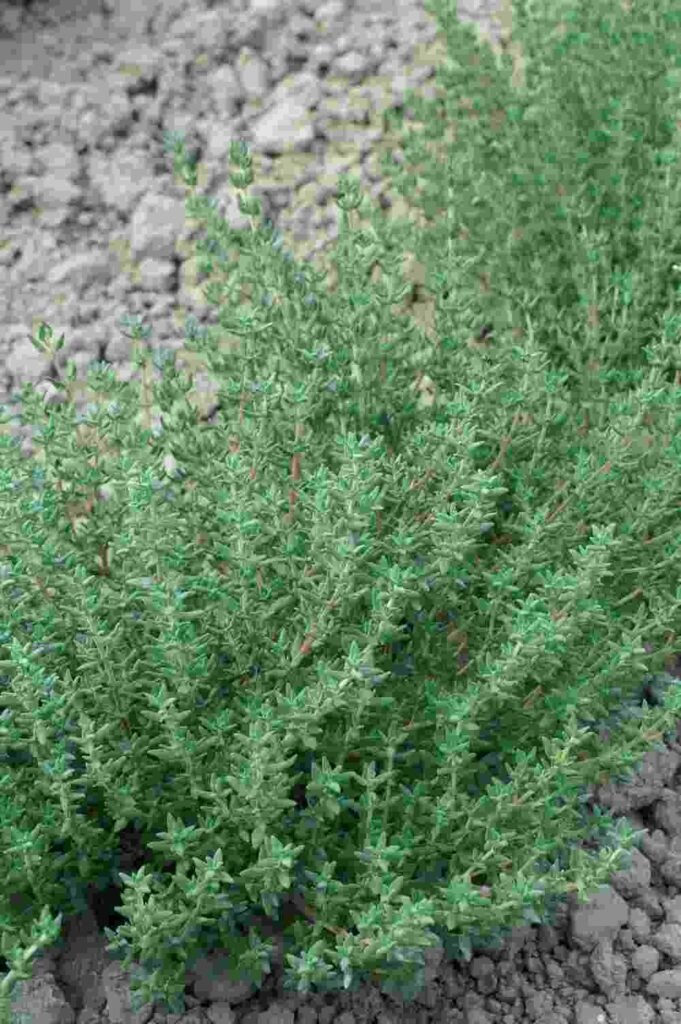
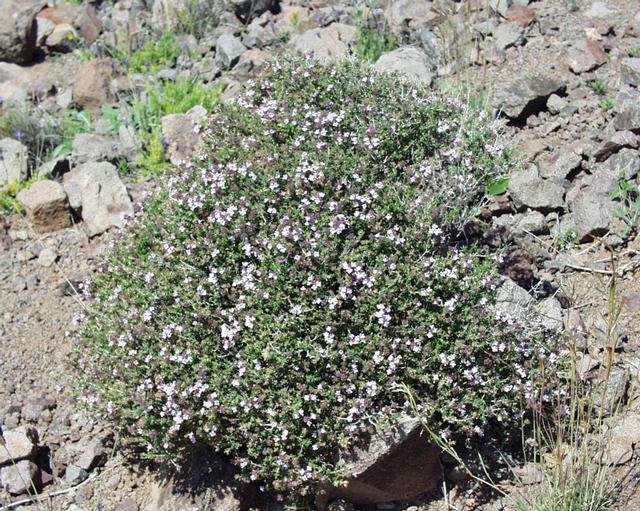

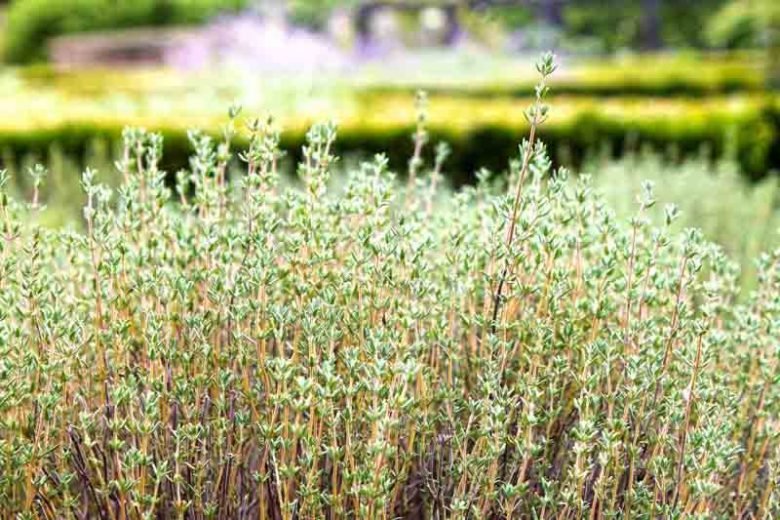
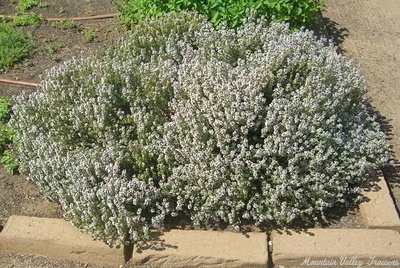
Growing Thymus vulgaris: A Complete Guide to Cultivating Common Thyme
Thymus vulgaris, commonly known as Common Thyme, is a beloved culinary herb that also boasts medicinal properties, aromatic foliage, and ornamental appeal. A staple in herb gardens worldwide, this hardy, drought-tolerant perennial is easy to grow and provides a host of benefits for gardeners, cooks, and pollinators alike. If you’re looking to cultivate a versatile and low-maintenance herb, Thymus vulgaris is an excellent choice.
Why Grow Thymus vulgaris?
Common Thyme is a must-have plant for any gardener, offering numerous advantages:
- Drought Resistance – Thrives in dry, sandy, or rocky soils with minimal watering.
- Low Maintenance – Requires little care once established and resists pests and diseases.
- Culinary Uses – A favorite herb in Mediterranean cuisine, adding depth to soups, stews, meats, and sauces.
- Medicinal Benefits – Contains antimicrobial, anti-inflammatory, and antioxidant compounds used in herbal remedies.
- Pollinator-Friendly – Produces tiny purple-pink flowers that attract bees, butterflies, and beneficial insects.
- Aromatic and Ornamental – Provides a delightful fragrance and enhances rock gardens, borders, and containers.
Best Growing Conditions for Thymus vulgaris
1. Climate and Hardiness
- Thrives in Mediterranean, temperate, and arid climates.
- Hardy in USDA zones 5-9, tolerating both heat and mild frost.
- Prefers dry, well-drained soil and thrives in full sun.
2. Soil Preferences
- Grows best in light, sandy, or rocky soils with excellent drainage.
- Prefers a neutral to slightly alkaline pH (6.0-8.0).
- Does not tolerate heavy clay or overly wet soil.
3. Sunlight Needs
- Requires full sun (at least 6-8 hours daily) for optimal growth and essential oil production.
- Can tolerate partial shade, but growth may be weaker and flavor less intense.
4. Watering Requirements
- Newly planted thyme needs regular watering until roots establish.
- Once mature, it is highly drought-tolerant and needs minimal watering.
- Overwatering can lead to root rot, so ensure proper drainage.
How to Plant Thymus vulgaris
1. Choosing the Right Location
- Ideal for herb gardens, borders, rock gardens, and container planting.
- Works well in raised beds and alongside other Mediterranean herbs like rosemary and lavender.
- Plant in a location with good air circulation to prevent fungal issues.
2. Propagation Methods
- Seed Propagation:
- Start seeds indoors in early spring or sow directly in late spring to early summer.
- Lightly press seeds into the soil without covering them, as they need light to germinate.
- Keep soil moist but not soggy until germination (typically 14-21 days).
- Cuttings & Division:
- Take softwood cuttings in spring or summer and root them in well-draining soil.
- Mature plants can be divided every 2-3 years to maintain vigor and spread growth.
Caring for Thymus vulgaris
1. Pruning for Healthy Growth
- Trim back after flowering to encourage bushier growth and prevent legginess.
- Light pruning in early spring helps remove dead or woody stems.
- Regular trimming helps maintain a compact, healthy shape.
2. Fertilization
- Common Thyme thrives in low-nutrient soils, so excessive fertilization is unnecessary.
- If growth is weak, apply a diluted organic fertilizer or compost tea in early spring.
3. Common Pests and Diseases
- Generally pest-resistant, but may attract aphids in humid conditions.
- Root rot can occur in poorly drained soils—avoid overwatering.
- Ensure good air circulation to prevent fungal infections such as powdery mildew.
Harvesting and Using Common Thyme
1. Best Time to Harvest
- Harvest leaves just before flowering in late spring or early summer for the best flavor and aroma.
- Use scissors or pruning shears to cut sprigs without damaging the plant.
- Regular harvesting encourages new growth and bushiness.
2. Drying and Storing
- Air dry the leaves in a shaded, well-ventilated area for 1-2 weeks.
- Store dried thyme in airtight containers in a cool, dark place.
- Can also be frozen or infused into oils and vinegars for long-term use.
Benefits of Growing Common thyme in the Garden
1. Ecological and Environmental Benefits
- Supports pollinators and beneficial insects, enhancing biodiversity.
- Reduces soil erosion and improves soil health with its root system.
- Drought-resistant and low-water needs, making it a sustainable landscaping option.
2. Culinary and Medicinal Uses
- Used in soups, stews, marinades, and roasted dishes for a rich, earthy flavor.
- Contains thymol, a natural antiseptic and antimicrobial compound beneficial for colds and respiratory health.
- Can be used topically for skin conditions and as a natural insect repellent.
Conclusion: Why Choose Thymus vulgaris?
Common Thyme is an exceptional, low-maintenance herb that enhances gardens, kitchens, and medicine cabinets alike. Whether you want a flavorful culinary herb, a medicinal remedy, or a pollinator-friendly plant, Thymus vulgaris is an excellent choice for any grower.
Looking to start growing Common Thyme? Plant today and enjoy its many benefits year-round!
More information: https://pfaf.org/user/plant.aspx?LatinName=Thymus+vulgaris


